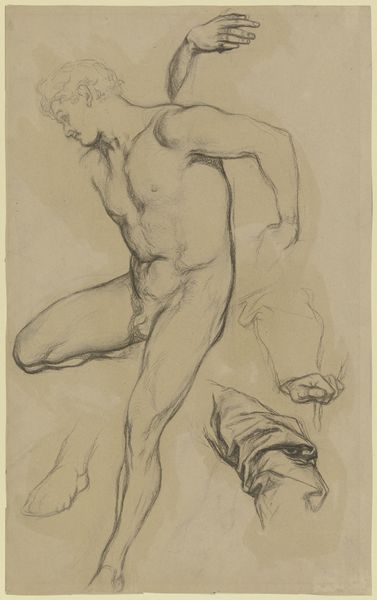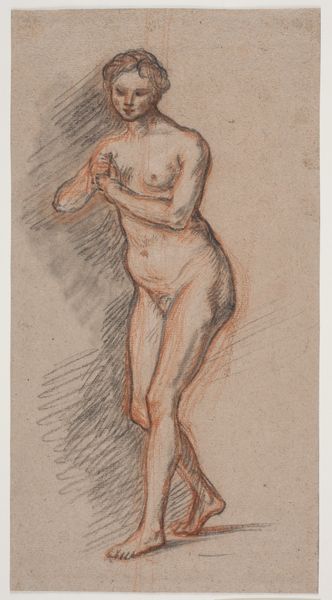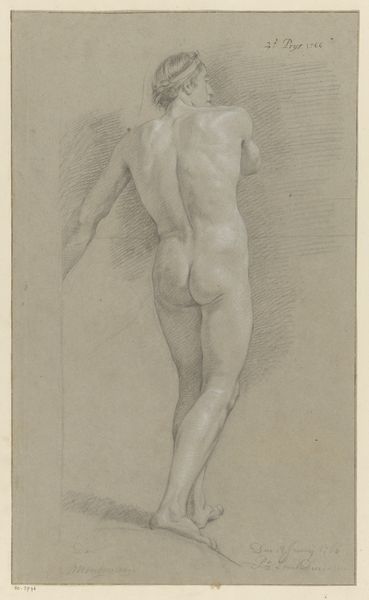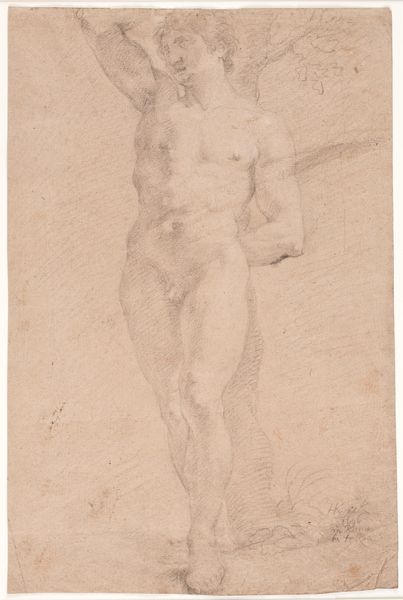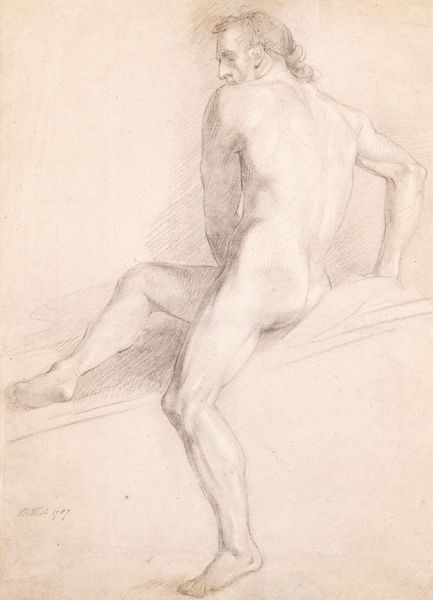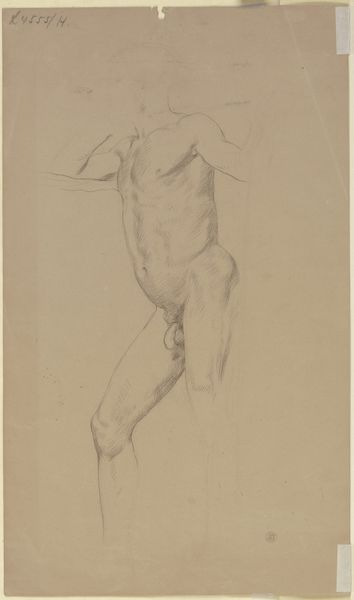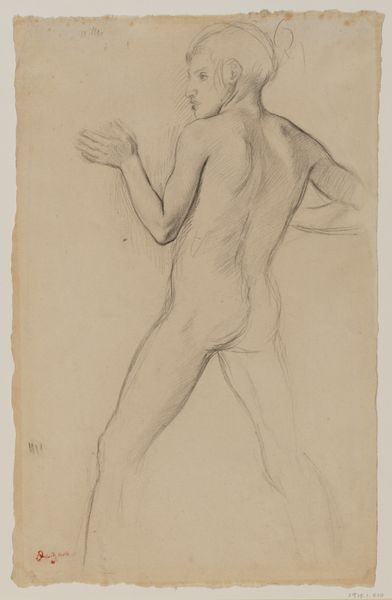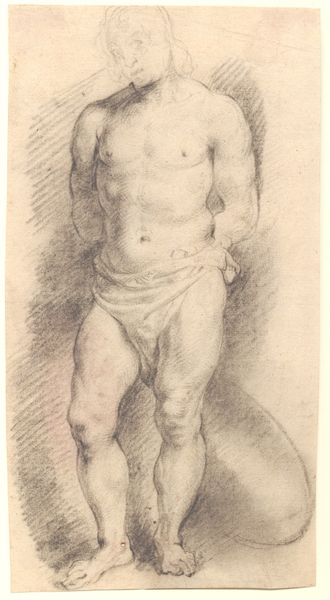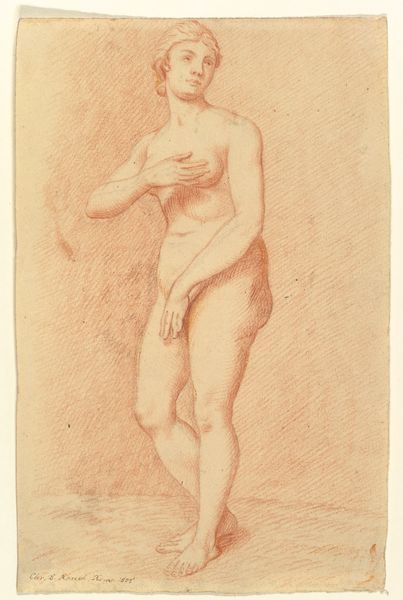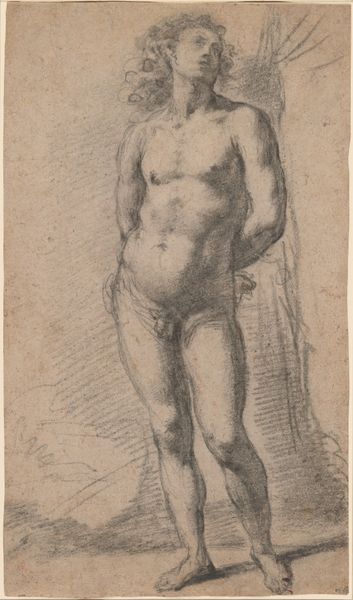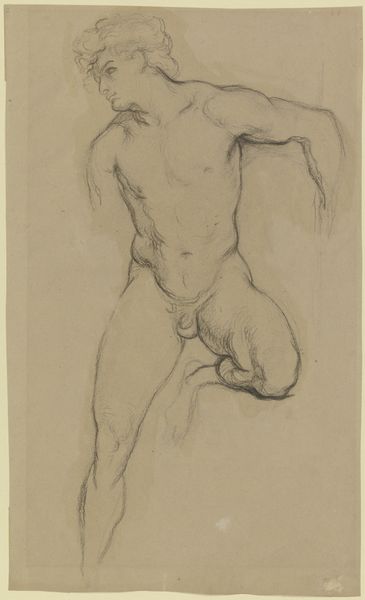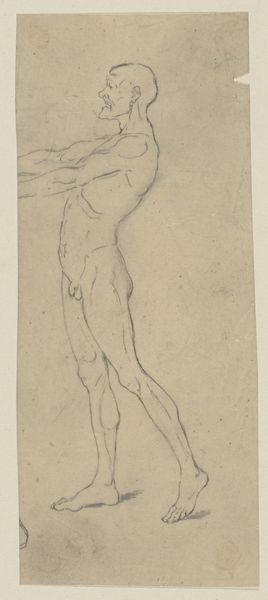
Staand mannelijk naakt, op de rug gezien (3e prijs 1766) Possibly 1766
0:00
0:00
drawing, dry-media, charcoal
#
drawing
#
charcoal drawing
#
form
#
dry-media
#
line
#
charcoal
#
history-painting
#
academic-art
#
nude
Dimensions: height 422 mm, width 266 mm
Copyright: Rijks Museum: Open Domain
Editor: This is "Standing Male Nude, Seen from the Back (3rd prize 1766)" by Harmanus Vinkeles, likely from 1766, made with charcoal. The red chalk gives it a warm tone, but the subject's posture feels a bit vulnerable to me. What do you see in this piece? Curator: I see an articulation of power, and simultaneously its undoing. While seemingly a straightforward academic study of the male nude, common during this period, it's impossible to ignore the layers of social and historical context informing the gaze here. Consider the power dynamics inherent in the act of looking, especially at a body presented as vulnerable. How might our contemporary understanding of the male form and its representation in art challenge traditional, often objectifying, viewpoints? Editor: So, it's not just about technique, but also about how we, as viewers, bring our own perspectives to it? Curator: Exactly. This drawing reflects the standards of beauty during its time, tied to classical ideals and the male gaze, but it can invite us to critically analyze how these standards reinforce societal structures. The slight twist of the figure’s head, as if he’s aware of being watched, also brings up questions around agency. Editor: That makes me think about the role of institutions, like the art academy, in shaping those standards. Curator: Precisely. Academic art was, and is, a product of specific cultural values. It served to uphold a particular version of history and societal order, usually one that centers whiteness, maleness, and heteronormativity. This drawing isn't just an artistic exercise, it's a historical document reflecting—and perpetuating—those values. Considering this context allows for a richer and more critical interpretation. Editor: I never thought I could see so much social commentary in what I thought was just a life drawing. Thanks! Curator: My pleasure. Hopefully, now you can see that every brushstroke and every choice of subject matter carries a cultural fingerprint, one that we, as critical viewers, have the responsibility to examine.
Comments
No comments
Be the first to comment and join the conversation on the ultimate creative platform.
